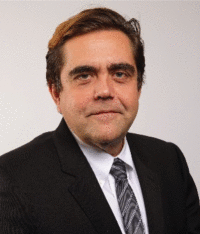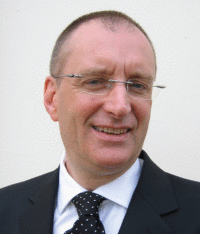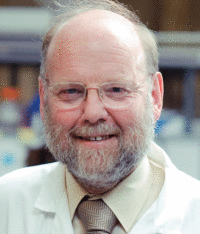The nature of cellular structure was first recognized by the British scientist Robert Hooke and described in Micrographia (Royal Society, September 1665) although their physiological role was not recognized for almost 200 years (Matthias Jakob Schleiden 1838 and Theodor Schwann 1839 working on plants and animals, respectively). In this special issue, which is related to a discussion meeting on ‘Cells: from Robert Hooke to cell therapy—a 350 year journey’ held at the Royal Society in October 2015, world leading researchers describe the way in which new approaches to cell therapy are being provided by our progressively greater understanding of the biology of cells. In particular, different populations of stem cells and the genetic modification of cells to produce highly targeted therapies. While still in its infancy, cell therapy is expected to make a very significant contribution to medicine within the next few decades. In this issue, world leading researchers describe applications that are now nearing the clinic and review the key advances in cell biology that underpin these treatments.
Stem cells were identified first in bone marrow and then other tissue. Tissue stem cells (also known as adult stem cells) are only able to form cells of that tissue type and have a relatively limited lifespan in culture. They are now being used for regenerative medicine in many different circumstances, including cartilage in joints and to tissue-engineer replacement tracheas. Other examples now in routine clinical practice include limbal stem cells to regenerate scarred corneas, and fibroblasts and epithelial cells to produce tissue-engineered skin for advanced wound healing.
More recently, stem cells were derived from embryos of mouse and then human. These ‘pluripotent’ cells have the great advantages that they will grow in culture for very long periods to yield very large numbers of cells, while also retaining the ability to form any tissue. Extraordinary opportunities to study the molecular mechanisms that regulate development were provided by the use of embryo stem cells to introduce genetic change into mice, a point that was recognized by the Nobel Prize in 2007. This information is vital for the development of cell therapies.
Taken together, a number of observations then demonstrated that the fate of somatic cells is not as rigidly fixed as had been imagined. Nuclear transfer, first in amphibians and most strikingly in mammals, demonstrated that factors in the oocyte are able to modify gene expression in a transferred nucleus so that the resulting embryo is able to develop to term. This led others to search for other methods of achieving this with cells from adult mammals. Specifically, it was shown that the introduction of a small number of carefully selected proteins is able to give a very small proportion of the cells the characteristics of embryo stem cells, known as ‘induced pluripotent stem cells' (or iPSC). The importance of these observations was also recognized by the award of a Nobel Prize, in 2012.
The genotype of iPS cells can be selected to minimize transplant immunological rejection. Human erythrocytes and other cells of the haematopoietic system are being produced in the laboratory and are expected to enter clinical trials within a few years. Cells derived from pluripotent cells are being trialled to treat patients with age-related macular degeneration, the commonest form of blindness in the developed world.
During the past 50 years, a series of methods have been developed by which it is possible to make precise genetic modifications in mammalian cells. Genetically modified cells are now being used in treatments of a range of different cancers and are starting to demonstrate transformative effects (and even cures) in patients with very late stage malignancies especially leukaemias and lymphomas. Furthermore, genetically modified cell technologies are also being developed to treat hereditary diseases such as monogenetic diseases.
Underpinned by scientific knowledge amassed during the 350 years since Robert Hooke's publication in Micrographia, and the accelerating pace of research, it is highly likely that within a few decades, cell therapies will be as ubiquitous in the clinic as chemical and biological drugs are today.
Biographies
Editor biographies
 Johan Hyllner is the Chief Scientific Officer of the Cell Therapy Catapult. He is currently Professor (adj) in Engineering Biology at Linköping University, Sweden and has a PhD from the University of Göteborg. As CSO for the Cell Therapy Catapult, he is responsible for external scientific relations, assessment of candidate projects and technical oversight of preclinical programmes. Prior to joining the Catapult, he occupied a range of senior management roles in the cell therapy industry, in which he has worked for over 15 years, at companies such as Cellectis, Cellartis and Vitrolife. He has extensive transaction experience and has been involved in many major collaborative projects with industry and academia. Current focus is on translation of a wide variety of cell therapies into the clinic. The technologies are based on several human cell sources including immune cells, and pluripotent and adult stem cells and cover disease areas like cancer, liver failure and stroke.
Johan Hyllner is the Chief Scientific Officer of the Cell Therapy Catapult. He is currently Professor (adj) in Engineering Biology at Linköping University, Sweden and has a PhD from the University of Göteborg. As CSO for the Cell Therapy Catapult, he is responsible for external scientific relations, assessment of candidate projects and technical oversight of preclinical programmes. Prior to joining the Catapult, he occupied a range of senior management roles in the cell therapy industry, in which he has worked for over 15 years, at companies such as Cellectis, Cellartis and Vitrolife. He has extensive transaction experience and has been involved in many major collaborative projects with industry and academia. Current focus is on translation of a wide variety of cell therapies into the clinic. The technologies are based on several human cell sources including immune cells, and pluripotent and adult stem cells and cover disease areas like cancer, liver failure and stroke.
 Chris Mason holds the Chair of Regenerative Medicine Bioprocessing in the Advanced Centre for Biochemical Engineering, University College London. His main focus is the clinical translation and commercialization of cell and gene therapies. He has a multidisciplinary track record, spanning therapeutics, medical devices and information technology, clinical medicine, bioprocessing, regulation, healthcare economics, reimbursement and business. His current responsibilities include: Senior Editor of the journals ‘Regenerative Medicine’ and ‘Cell & Gene Therapy Insights’, Chair of the BioIndustry Association, Regenerative Medicine and Cell Therapy Industry Group, Founder and CEO of the London Regenerative Medicine Network, and Trustee of the UK Stem Cell Foundation. Prof. Mason is on a number of national and international committees, working groups and advisory boards enabling the clinical translation and commercialization of cell and gene therapies including: the UK–Israel Science Council, UK Regenerative Medicine Expert Group, the Scientific Advisory Panel of the UK Cell Therapy Catapult, and the Strategic Advisory Board of the Canadian Centre for the Commercialization of Regenerative Medicine.
Chris Mason holds the Chair of Regenerative Medicine Bioprocessing in the Advanced Centre for Biochemical Engineering, University College London. His main focus is the clinical translation and commercialization of cell and gene therapies. He has a multidisciplinary track record, spanning therapeutics, medical devices and information technology, clinical medicine, bioprocessing, regulation, healthcare economics, reimbursement and business. His current responsibilities include: Senior Editor of the journals ‘Regenerative Medicine’ and ‘Cell & Gene Therapy Insights’, Chair of the BioIndustry Association, Regenerative Medicine and Cell Therapy Industry Group, Founder and CEO of the London Regenerative Medicine Network, and Trustee of the UK Stem Cell Foundation. Prof. Mason is on a number of national and international committees, working groups and advisory boards enabling the clinical translation and commercialization of cell and gene therapies including: the UK–Israel Science Council, UK Regenerative Medicine Expert Group, the Scientific Advisory Panel of the UK Cell Therapy Catapult, and the Strategic Advisory Board of the Canadian Centre for the Commercialization of Regenerative Medicine.
 Ian Wilmut is Prof. Emeritus in the Centre for Regenerative Medicine of the University of Edinburgh where his research has been concerned with understanding and improving methods for reprogramming human cells. He trained in animal science at the University of Nottingham before completing a PhD at the University of Cambridge with EJC Polge FRS. During a post-doctoral fellowship with Polge and LEA Rowson FRS, they produced the first calves from frozen and thawed embryos. From Cambridge, he moved to the Roslin Institute where he was leader of the team that produced Dolly the cloned sheep, the first clone from an adult animal. From 2005 to 2011, he led the development of the MRC Centre for Regenerative Medicine in Edinburgh. He is a Fellow of the Royal Societies of London and Edinburgh, a Fellow of Deutsche Akademie der Naturforscher Leopoldina and an Overseas Associate of the National Academy of Sciences.
Ian Wilmut is Prof. Emeritus in the Centre for Regenerative Medicine of the University of Edinburgh where his research has been concerned with understanding and improving methods for reprogramming human cells. He trained in animal science at the University of Nottingham before completing a PhD at the University of Cambridge with EJC Polge FRS. During a post-doctoral fellowship with Polge and LEA Rowson FRS, they produced the first calves from frozen and thawed embryos. From Cambridge, he moved to the Roslin Institute where he was leader of the team that produced Dolly the cloned sheep, the first clone from an adult animal. From 2005 to 2011, he led the development of the MRC Centre for Regenerative Medicine in Edinburgh. He is a Fellow of the Royal Societies of London and Edinburgh, a Fellow of Deutsche Akademie der Naturforscher Leopoldina and an Overseas Associate of the National Academy of Sciences.


